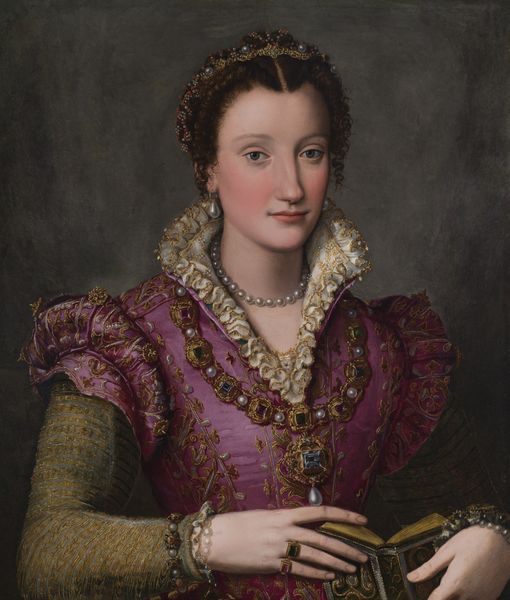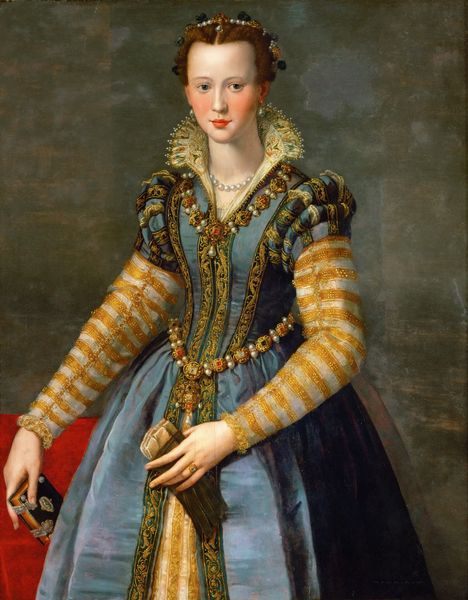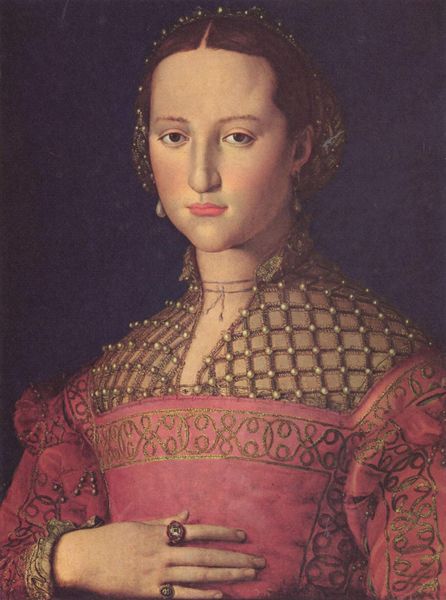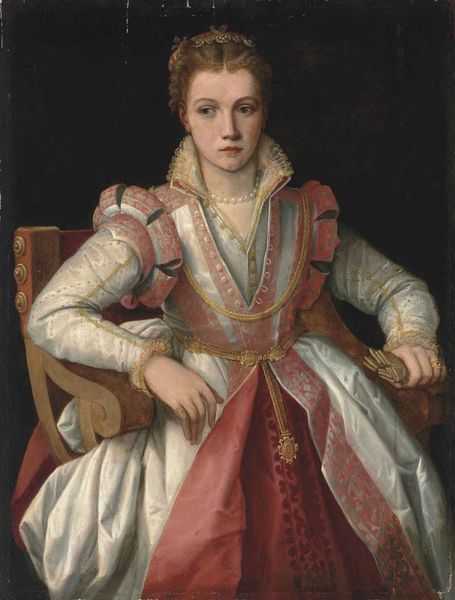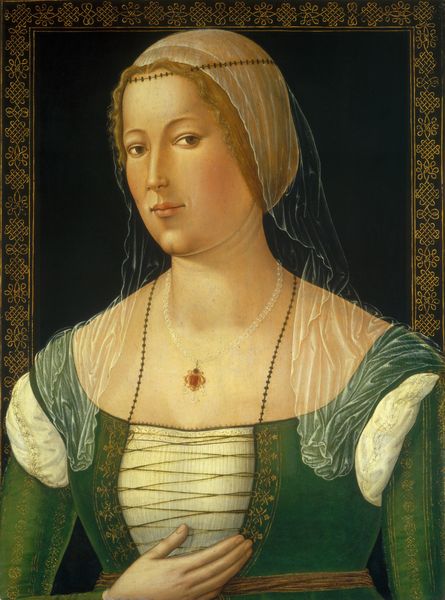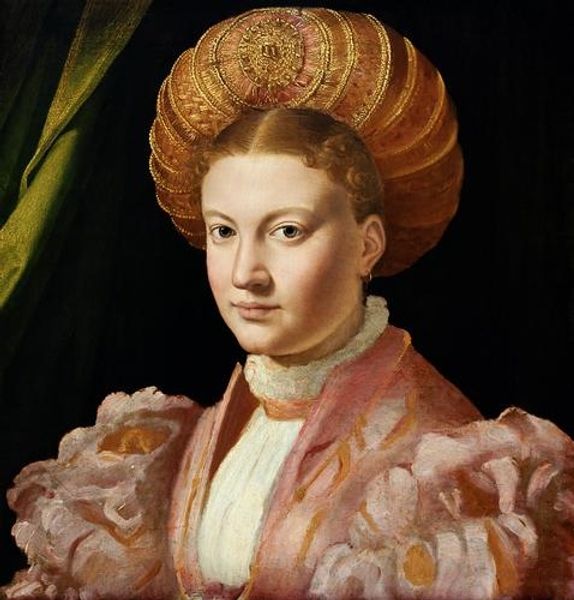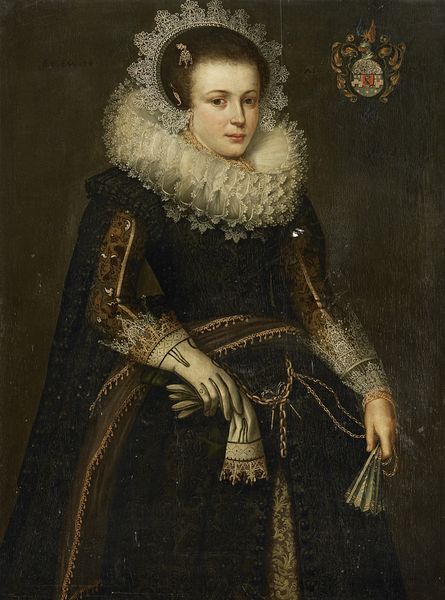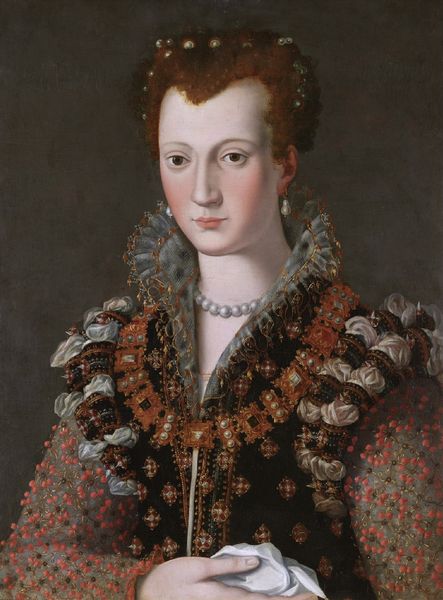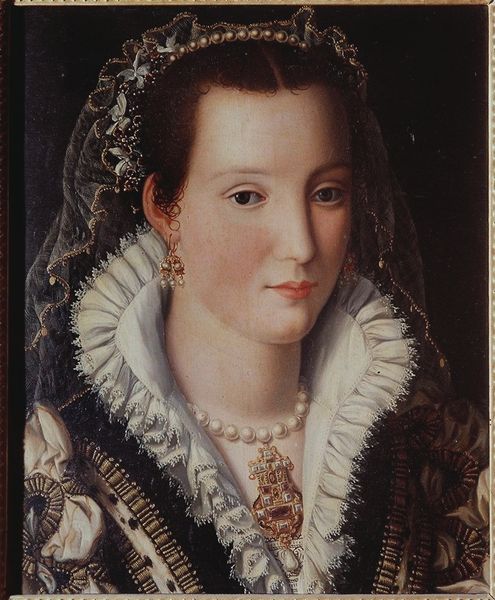
painting, oil-paint
#
portrait
#
painting
#
oil-paint
#
mannerism
#
italian-renaissance
Copyright: Public domain
Editor: This is Alessandro Allori's "Portrait of a Lady," painted around 1560 using oil. There's something very composed and stately about her posture and gaze. The painting is dominated by this intense, verdant green. What elements of its formal construction stand out to you? Curator: I would say immediately, note how the composition isolates form from content to establish fundamental qualities such as its artificiality. The artist does this, for instance, through color composition and value range: he has achieved the highest chromatic intensity by placing emerald green over brown shadow; his goal is to avoid the effect of pictorial imitation. And that ruff around her neck acts almost as a halo, doesn't it? The whole work emphasizes an interest in structure. Editor: I see what you mean. The details in the dress are fascinating but almost overwhelming; they almost upstage the subject's face, perhaps even working to disguise it as a means of representation, of symbolic function? It almost reads as abstracted fashion rather than portraiture. Curator: Exactly. Think about it - is there a connection between that color value that flattens forms and the overall symmetry of shapes? Look at the use of parallel lines in the gown and the almost mirrored quality of the sleeves, her almost expressionless face that looks directly to the viewer? How are we being compelled by a certain flatness, stylization, artificiality? The composition is primarily based on these geometric arrangements to convey an idea. Editor: It’s a powerful reminder that what appears straightforward, like a portrait, can be so much more about form and symbolic function! Thanks for drawing my attention to this structural artifice. Curator: It also provides new insights into how period concepts emerge from, are hidden, and interact. It is rewarding.
Comments
No comments
Be the first to comment and join the conversation on the ultimate creative platform.
